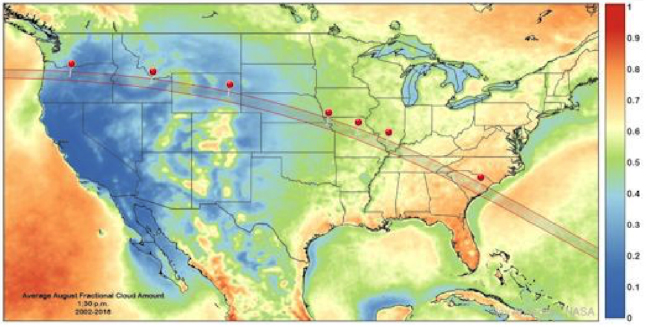
By David F. Rooney
What’s being called the Great American Solar Eclipse is less than two months away and prime total-eclipse-watching seats are just a car-trip away from Revelstoke in Oregon and Idaho.
This rare astronomical event will take place on Monday, August 21. And, if you can’t get away, rest assured that we will nonetheless still be able to see a partial eclipse, starting at 9:20 am. It is expected to last 2 hours and 28 minutes.
Here are a few of the communities sponsoring special celebrations of the total eclipse:
- Salem, Oregon— The Oregon Museum of Science and Industry will host an event at the .Oregon State Fairgrounds;
- Madras, Oregon— The city will sponsor a four-day Solarfest at two locations;
- Prineville, Oregon— Symbiosis Gathering will be hosting a Global Eclipse Gathering. Dubbed Oregon Eclipse, the event will feature music, workshops, and art; and
- Rexburg, Idaho — Brigham Young University Idahowill offer a series of eclipse-related educational events.
Do you know where you will be? The map below, courtesy of Spaceweather.com, shows the path of totality (the narrow zone where the Moon completely covers the sun) overlaid on a statistical map of cloudiness for the month of August. The best places to be are blue:
According to Spaceweather.com, Canadian meteorologist Jay Anderson and colleague Jennifer West made the map based on data from NASA’s Terra and Aqua satellites. “It shows that people in western states, where fractional cloud cover dips as low as 15%, are most likely to witness the precious two and a half minutes of totality. Overcast is more of a problem east of Missouri,” the website says. “As the Moon’s shadow approaches the Atlantic Coast of the USA, there is a better than 50% chance that it will be hitting the tops of clouds instead of the landscape below.
“The red pushpins in the map show confirmed launch sites for the Spaceweather.com Solar Eclipse Balloon Network. Using space weather balloons, teams of student researchers will launch cameras to the stratosphere for a unique view of the eclipse high above any obscuring clouds. There’s more to their mission, however, than photography: Each balloon will also be equipped with an array of cosmic ray sensors.” By the time the eclipse is finished, they hope to have gained a snapshot of how deep-space radiation is penetrating Earth’s atmosphere across the entirety of North America.



